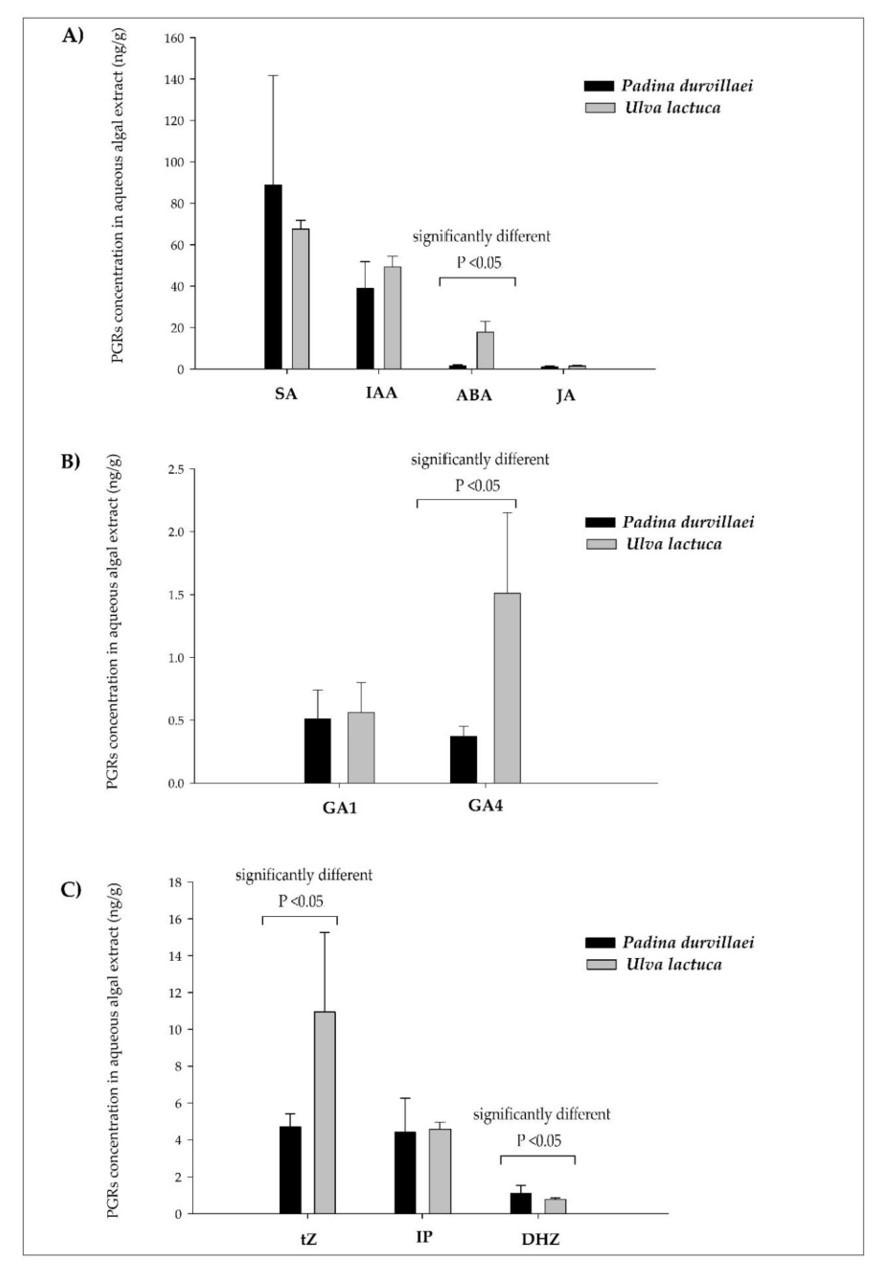Seaweed Plant Hormones Determination Service
Ensuring Quality Through Professional Seaweed Phytohormones Analysis
Phytohormones (also called plant hormones) are the main chemicals found in seaweeds that are responsible for various processes and influence the different hormonal pathways occurring in these organisms. Creative Biolabs provides a high-quality phytohormone analysis service to our clients to aid in scientific research results and studies. We test for phytohormones in all types of seaweeds.
We are committed to supporting our clients in Biomass-related research on Seaweeds and other biomass. The identification and quantitative measurement of phytohormones in seaweeds provide valuable information for understanding the functions of phytohormones and the value of seaweeds as biofertilizers. We have developed a fast and sensitive ion chromatography method to achieve an efficient analysis of phytohormones in seaweed. The method has been proven to greatly reduce sample handling and total analysis time, is very reliable, and is suitable for routine analysis of trace amounts of multiple classes of phytohormones in seaweeds.
Our method applies to different sample types and mainly detects the following 9 phytohormones.
-
Salicylic acid
-
Gibberellic acid
-
Indole-2-acetic acid
-
Indole-3-acetic acid
-
Indole-3-butyric acid
-
Indole-3-propionic acid
-
Kinetin riboside
-
Abscisic acid
-
6-Benzylaminopurine
 Fig.1 Flowchart for phytohormone analysis of seaweeds.
Fig.1 Flowchart for phytohormone analysis of seaweeds.
Advantages of Seaweed Phytohormones Analysis Service
-
Precision and efficiency: We use ion chromatography for precise and trace quantitative analysis of phytohormones.
-
Short cycle time: In addition to the efficient analytical methods, we have a permanent stock of standards for the determination of phytohormones in seaweeds, which guarantees fast results.
-
Flexible analytical solutions: We develop custom solutions for phytohormone analysis in seaweeds according to the needs of our clients.
Creative Biolabs uses ion chromatography to efficiently and accurately detect the content of phytohormones in seaweeds according to skilled phytohormone analysis experience. Welcome to contact us to learn more about seaweed phytohormone analysis if you are interested in our services. Our analysts are ready to answer your questions and serve you immediately.
Published data
Seaweeds contain various compounds such as phenols, pigments, and phytohormones that are used as biofertilizers to improve crop productivity. To determine whether Ulva lactuca and Padina durvillaei can be used as biofertilizers, the present study examined the major phytohormones contained in both plants and tested their antioxidant properties. The researchers found several types of phytohormones in both plants. Among them, the cytokinins dihydrozeatin (DHZ), trans-zeatin (tZ), and gibberellin (GA4) were higher in P. durvillaei. In addition, P. durvillaei also had higher levels of flavonoids, phenolic compounds, and somewhat higher antioxidant activity. From these assays, it is also clear that U. lactuca and P. durvillaei are suitable candidates for use as biofertilizers. Through this study, we also learned how to efficiently detect and analyze phytohormones in seaweeds.
 Fig.2 Quantitative analysis of phytohormones in extracts of U. lactuca and P. durvillaei.1, 2
Fig.2 Quantitative analysis of phytohormones in extracts of U. lactuca and P. durvillaei.1, 2
FAQs
Q1: What is the importance of seaweed phytohormone analysis for seaweed applications?
A1: Seaweeds contain phytohormones that play important roles in their growth and reproduction. Phytohormone analysis of seaweeds helps to understand the composition of hormones, physiological processes, and regulatory mechanisms of growth and development in seaweeds. In addition, analyzing the phytohormone composition of seaweeds helps to study the application value of seaweeds as bio-fertilizers.
Q2: What analytical techniques are used for phytohormone analysis of seaweeds?
A2: Commonly used techniques for phytohormone analysis in seaweeds include enzyme-linked immunosorbent assay, gas chromatography-mass spectrometry, ion chromatography, etc. These analytical methods can effectively detect, identify, and quantify various phytohormones present in seaweed samples.
Customer Review
Efficient and Accurate Analysis
"We were very satisfied with their phytohormone analysis service for seaweed at Creative Biolabs. We were particularly impressed by the accuracy and precision of the results of one of the analyses. They used advanced analytical techniques and performed reliable and reproducible quantitative analyses. We relied on this data with great confidence to continue our seaweed research."
Professional and Transparent Analysis
"Creative Biolabs' attention to detail, expertise, and commitment to client satisfaction made them a trusted partner for us. Their seaweed phytohormone analysis service has been very helpful to our research progress. Throughout the process of seaweed phytohormone analysis, they demonstrated to us their extensive expertise in the field of seaweed phytohormone analysis. They also provided regular updates on the progress of the analysis, ensuring transparency and keeping us informed throughout the process."
References
-
Benítez García, Israel, et al. "Identification and quantification of plant growth regulators and antioxidant compounds in aqueous extracts of Padina durvillaei and Ulva lactuca." Agronomy 10.6 (2020): 866.
-
Under Open Access license CC BY 4.0, without modification.
For Research Use Only.
Related Services

 Fig.1 Flowchart for phytohormone analysis of seaweeds.
Fig.1 Flowchart for phytohormone analysis of seaweeds.
 Fig.2 Quantitative analysis of phytohormones in extracts of U. lactuca and P. durvillaei.1, 2
Fig.2 Quantitative analysis of phytohormones in extracts of U. lactuca and P. durvillaei.1, 2

